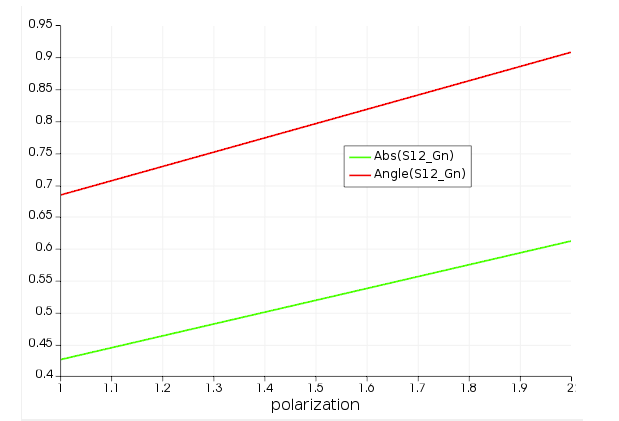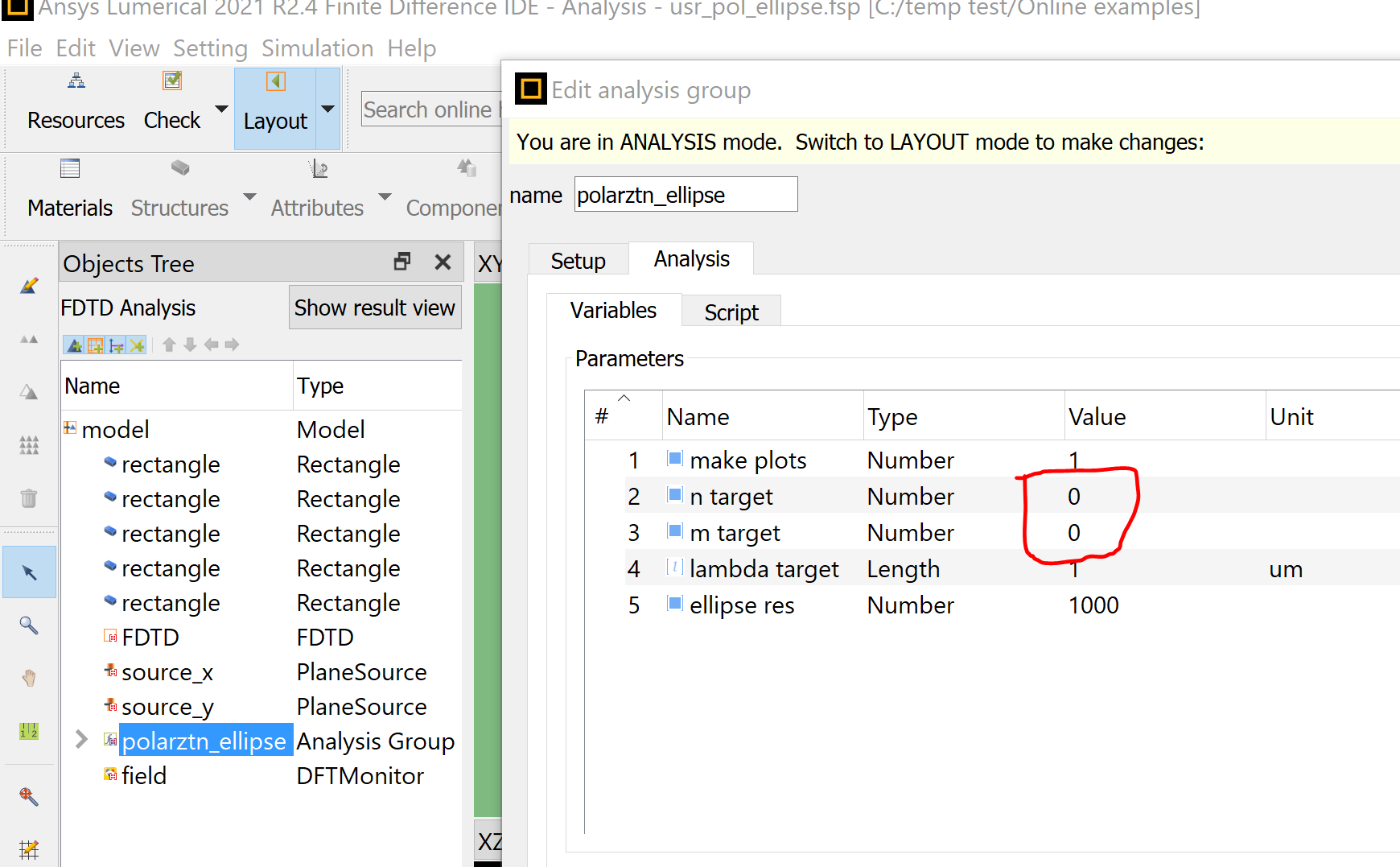TAGGED: far-field-moniter, metasurface, polarisation, s-parameter
-
-
January 4, 2022 at 12:24 pm
sandeep_chamoli
SubscriberHi Team,
I have a Metasurface and I want to see how it rotates the polarisation in the plane. I think FDTD has two ways to do so (1) using the S parameter and (2) using the far field moniter/polarisation ellipse analysis group. However, I couldn't get the right answer. I want to verify reciprocity. Thus, polarization states should match if light is incident from both directions. Also, from a far field monitor, diffracted modes should be the same.
I also used a very famous example here in all the discussion https://support.lumerical.com/hc/en-us/articles/360034395234-Calculating-the-far-field-polarization-ellipse。
Also, can we compare the result to see the polarisation rotation from s parameter and polarisation ellipse?
January 4, 2022 at 9:54 pmGuilin Sun
Ansys EmployeeIn many a time we are used to a terminology but forget its original definition. The polarization state can be best defined for plane wave, but it might be difficult for non-plane waves with a few exceptions. I am not sure what the functionality of your metasurface. Is it used to create a plane wave such as a prism-like device, or it is a lens?
I am not sure how to get the polarization from s parameter since none of s is associated with electric fields. For the polarization ellipse, it is used for periodic structure so its farfield is a plane wave for any give diffraction order.
In your case to verify the reciprocity, you may simply check the near fields of the transversal E components and compare them. You will need to use phase compensation to the monitor data to get the phase change purely from the metasurface. Please refer this page for more info: Metamaterial S parameter extraction
If you still have questions, please elaborate more about the metasurface and the wave (fields) .
January 5, 2022 at 12:43 amsandeep_chamoli
SubscriberHere is the details of my metasurface. its periodic in x and y as shown below.
 Now i launch a light with pol 0 deg, along the x (longer side). using fae field component and polarisation ellipse analysis group. i get this normalised E field result.
Now i launch a light with pol 0 deg, along the x (longer side). using fae field component and polarisation ellipse analysis group. i get this normalised E field result.
Now my first question is :
(1) in polarisation ellipse analysis group, how to get the exact the polarisation state of each of mode present above at +45, 0 and -45 deg?
(2) after getting the exact pol state for each mode, if we use it and we shold get back linear pol light again (from where we start). In this case can we use multiple plane wave source in the simulation for each diffracted mode here?
January 5, 2022 at 12:52 amsandeep_chamoli
Subscriberand yes, i used https://support.lumerical.com/hc/en-us/articles/360042095873-Metamaterial-S-parameter-extraction for tha same purpose but i could get the same polarisation when go back. It shold be simple but somehow it is not giving the exact result. Here is the detail.
(1) So i used p light incidnet on Metasurface and using s polarisation in s-parameter i got this information about the E field.
 (2) Now using this data in my source of S and P light with proper phase difference and amplitude , i was unable to get back to initial result again.
(2) Now using this data in my source of S and P light with proper phase difference and amplitude , i was unable to get back to initial result again.
January 5, 2022 at 1:12 amGuilin Sun
Ansys EmployeeCould you please define "polarisation state"? if it is the ellipse parameters, you can specify the diffraction order first:
 Then you will get the result for the specified order. For other orders, simply repeat this procedure without re-doing the simulation.
Then you will get the result for the specified order. For other orders, simply repeat this procedure without re-doing the simulation.
For the second question, it seems you want to use the above decomposed elliptical polarization as the source to do the simulation again? sure you can create such source using two sources: one has magnitude of a (by default it is 1 w/v/m), zero initial phase, and another plane wave with magnitude b and phase difference 90 deg, eg a+b*exp(j*phase_difference). (or with a minus sign in front of phase). Please try, and if you have questions, please write another new post.
January 5, 2022 at 2:06 amsandeep_chamoli
SubscriberThanks for the quick response.
(1) Polarisation state mean, as we know in FDTD plane wave source , we need to define the amplitude and phase difference for two orthogonal plane wave source for elliptical light. So i am looking for this that how to get amplitude and phase difference for each mode (at +45, -45 and 0 deg diffraction order) from polarisation ellipse analysis group?
(2) Yes i want to use polarisation state of all the modes so that i can verify the reciprocity, right? and i should get the linear light back. so that means i need six plane wave , 2 plane wave for each mode. can i use all six plane wave in the simulation?
Do you mean two plane source , with 0 deg and 90 pol input, a and b amplitude input, and phase difference which we can calculate from polarisation ellipse?

January 5, 2022 at 8:15 pmGuilin Sun
Ansys Employeethe continuation discussion can be found here /forum/discussion/34983/polarisation-rotation-due-to-metasurface-more-questions#latest
Viewing 6 reply threads- The topic ‘Polarisation rotation due to Metasurface’ is closed to new replies.
Ansys Innovation SpaceTrending discussionsTop Contributors-
3597
-
1283
-
1117
-
1068
-
983
Top Rated Tags© 2025 Copyright ANSYS, Inc. All rights reserved.
Ansys does not support the usage of unauthorized Ansys software. Please visit www.ansys.com to obtain an official distribution.
-












